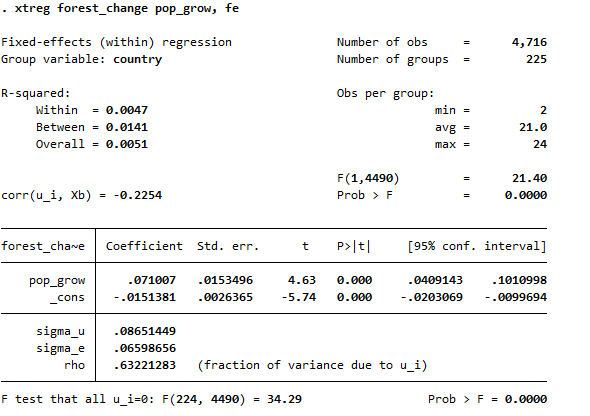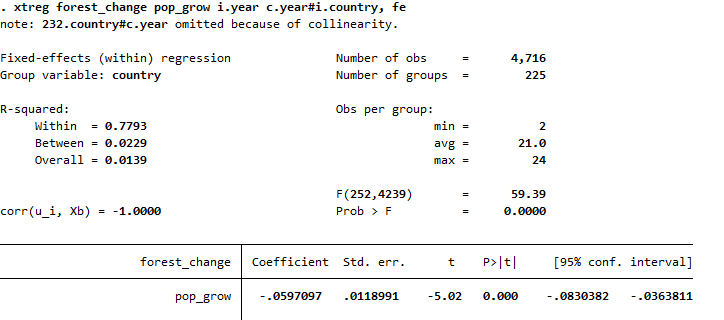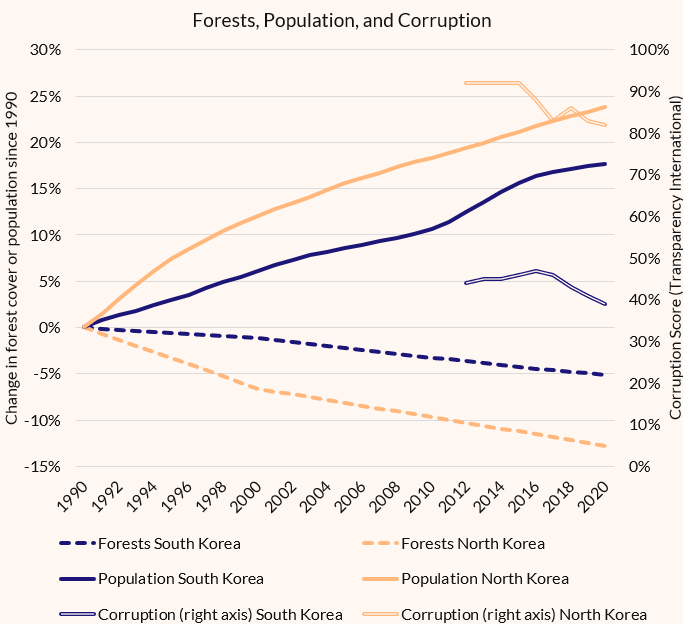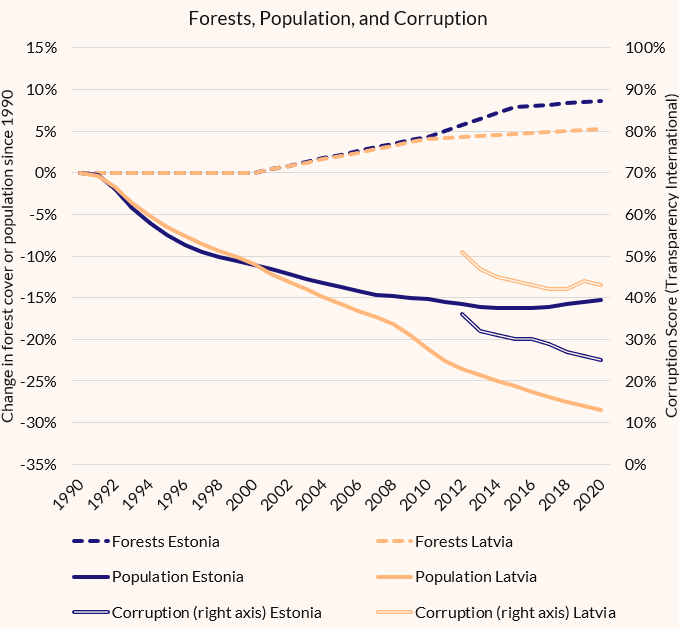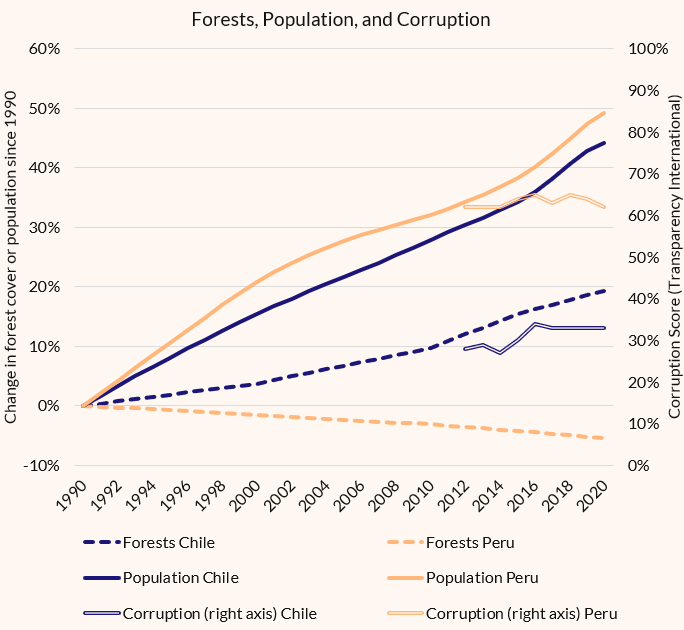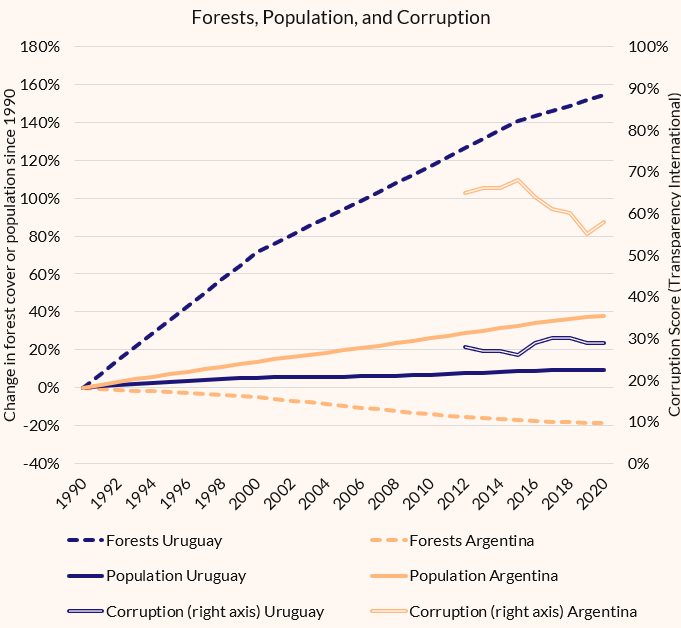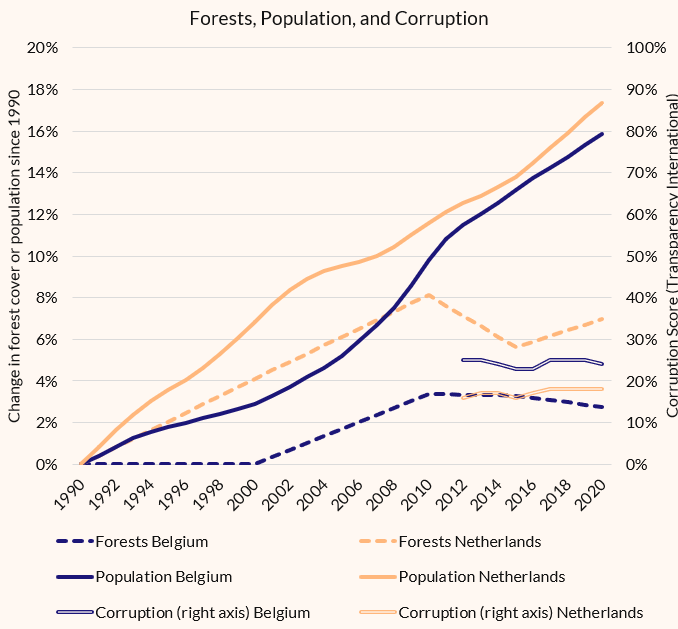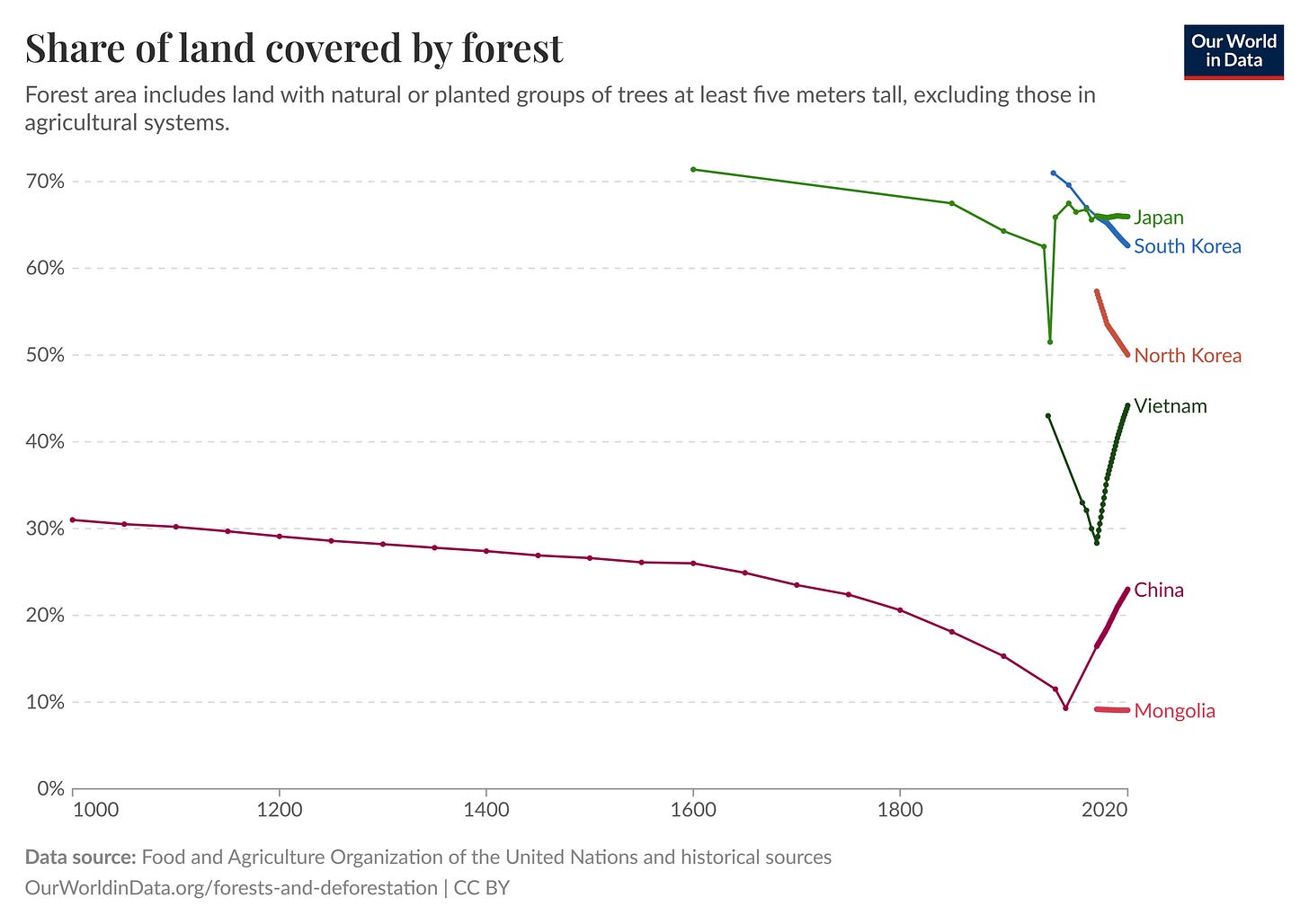Many people think if human population keeps rising it will lead to habitat losses for animals or bugs etc and that this will be a quite bad thing. A few degenerate psychos believe human population growth will lead to habitat losses for animals or bugs etc and that this will be a quite good thing. People often argue about how bad or good the loss of habitats might be.
But it turns out human population growth does not threaten habitats at all. In this post I will prove this surprisingly controversial claim in four steps:
1. Faster population growth among countries is only very modestly predictive of deforestation (the most widely available measure of habitat loss).
2. That modest predictive power operates entirely through the channel of corrupt institutions: political corruption explains virtually all global trends in deforestation.
3. Moreover, actual real-world population control has caused MORE deforestation.
4. And finally, I will show that global land use by humans is not rising even as population growth is continuing, because of factory farming.
Population Growth Doesn’t Predict Deforestation
We have data on deforestation over time. We also have data on population. Thus, we can test how they are related to each other.
So let’s ask a question: how correlated is the 10-year change in forest cover with the 10-year change in population?
Answer: -0.07. Virtually no correlation.
But that’s cheating: obviously we want within-country effects. We want to know when a given country grows faster, does it cause more deforestation, not just is there a cross-country correlation.
Well, yes there is!
In a panel model with country fixed effects when population growth is faster, forest coverage rises.
!!!!!
This is not intuitive to many people. My defense is two fold:
That doesn’t matter. Facts simply exist. The social world does not operate on lawlike generalizations. “We can’t think of a theory to explain this” is not a reason to doubt. Sometimes we just discover facts! And the fact is that, within a given country, periods of faster population growth are periods of more POSITIVE change in forest coverage!
But there are some reasons to believe this. About 90% of the complete data points are since 1990. Forest management might be better since 1990 in many countries than it was in the past, and maybe our intuitions are informed by historical experiences. Or, maybe we have bad intuitions about historic forests: historic societies needed firewood, so did a lot of deforestation, whereas modern societies just are not as directly wood intensive. If the past had faster growth and the past had a more wood-intensive economy, this could perhaps explain the result.
But there’s a third explanation which is a much better rebuttal:
Of course population growth doesn’t predict deforestation! American consumers don’t deforest America! They deforest Brazil and Indonesia! Country-level analysis is just a category error!
We’ll return to this in point #4 below but for here we can do a nice workaround!
This theory basically says “Country-level trends are confounded by global population growth trends.”
But we can control for this! We can use country-linear time trends AND year effects. This will demean out any effects of global population growth experienced across many countries, as well as long-run trends for specific countries, and will show us the local effect of locally unusual growth.
Now the coefficient is negative as expected, and significant!
But how big is it?
Well, the key variables have a scale theoretically ranging from -1 to infinity. In practice, the average decadal population growth is 0.16, or 16%, with a standard deviation of 19%.
The average forest change is basically 0, with a standard deviation of 0.11.
So now let’s put this all together. How much would one standard deviation change in population growth change deforestation?
One standard deviation change in population is 0.19. 0.19 x -0.0597 (effect size above) = -0.01 . -0.01 / 0.11 (Standard deviation of forest change) = ~10%.
So moving from about the 50th percentile of population growth to about the 75th-85th percentile of population growth, a very big change, would shift a hypothetical country from the 50th percentile of forest change to the 42nd to 48th percentile of forest change, a very small effect.
So in this specification, population does create some deforestation, but you have to have huge population growth to get very modest changes in deforestation. The effect is extremely small.
It’s Actually Just Proxying for Corruption
But here’s the thing about deforestation: it mostly doesn’t happen on a huge scale because people in a country were just like “Huh, seems like a good day to get rid of our cherished rainforest.” Most countries at least have laws on the books regulating this stuff, and international treaties impose their own restrictions on forest clearance.
So, why does deforestation continue? Well, consider the case of the Korean peninsula:
North Korea has had faster population growth (top solid lines) than South Korea. And it has had more deforestation (bottom hashed lines). But North Korea is also just a vastly more corrupt country than South Korea (hollow lines). So which is it? Is it corruption or population growth?
Unfortunately the corruption data doesn’t go back far enough to specify our change-over-time panel model in a reliable way. But we can look at other countries with lots of similarities, but differences in corruption, and see what they tell us!
Here’s Estonia vs. Latvia:
You can see Latvia has actually had an almost 30% population decline, whereas Estonia has had just a 15% decline. Yet Estonia has added 8% to its forests, Latvia just 5%: Estonia declined less but reforested more. Why? Estonia is less corrupt!
Or consider Chile vs. Peru!
Chile and Peru have had extremely similar population growth over time, with Peru just slightly higher. But Peru’s forest cover has declined by about 5% while Chile’s has risen by 20%!
Why?
Well, Peru is a vastly more corrupt place than Chile!
How about… Uruguay and Argentina?
Argentina has grown a lot more than Uruguay: Uruguay is up about 10%, Argentina is up 40%.
But look at the forest cover changes! Argentina has lost 20% of its forest cover, whereas Uruguary has risen by 150%!!!
Why did Uruguay’s forest cover rise even as population grew?
Simple: they didn’t have a ton to begin with, and in 1987 they passed a strict forest protection law and their bureaucracy was honest enough to enforce it!
How about Belgium vs. the Netherlands?
The Netherlands had slightly faster population growth, which you’d think would mean worse change for forests. But in fact, the Netherlands had a bigger increase in forest cover. Why? The Dutch are less corrupt!
Now look, it’s not literally always corruption. But corruption is a good proxy for state capacity, for the extent to which the government faithfully, capably, and honestly discharges its duties to the public. Most publics don’t like widespread deforestation. When governments are accountable, forests grow.
And this has been known for literally centuries! England’s oldest woods are often preserved, why? Because they were protected by the state! England had a relatively functional state, and so its forests were maintained.
One of my favorite examples of this is in Asia:
Can you spot the decline of the Qing Dynasty? How about the French colonialism + Japanese occupation + Vietnam war in Vietnam? Can you see it? I can! Can you see the Japanese state hitting resource constraints in the early 20th century and then getting the crap bombed out of them in WWII? I can!
Forest cover changes because of state activity. When states value forests, forests grow. When states (including invading states!) do not value forests, forests do not grow.
The simple reality is that it’s not actually population doing the damage it’s unaccountable governments. And those can exist at any population level!
Population Control Doesn’t Slow Deforestation
Keep reading with a 7-day free trial
Subscribe to Lyman Stone to keep reading this post and get 7 days of free access to the full post archives.



